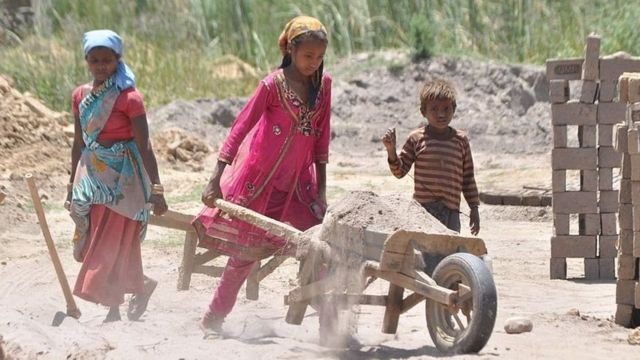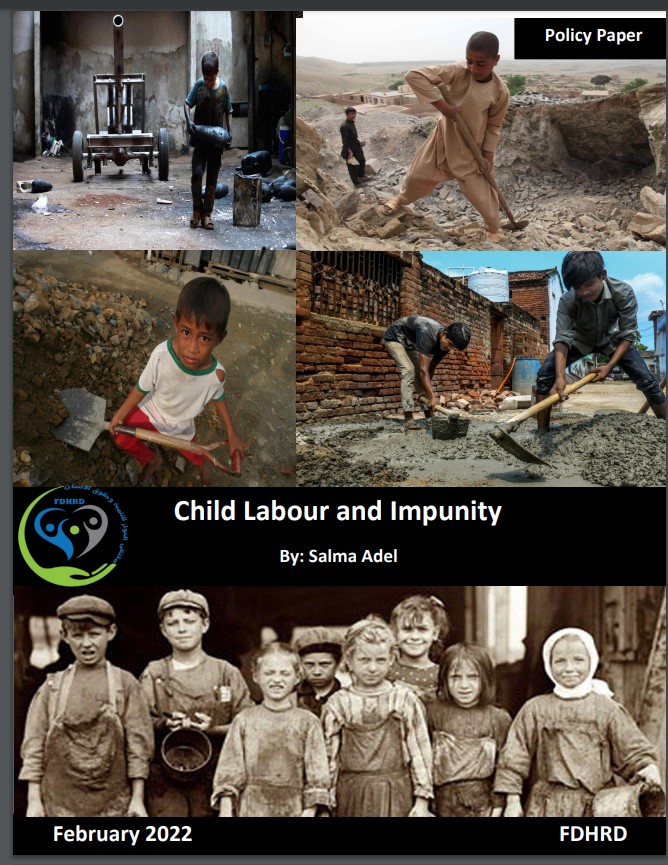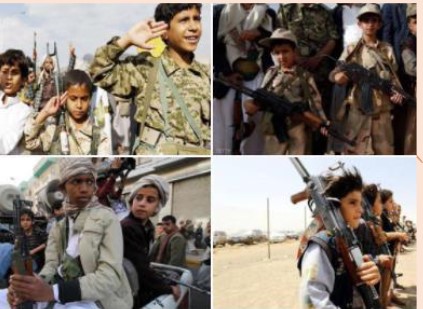Press release
…………………………………………………………..
Today, Monday, February 7, 2022, the Research and Studies Unit of the Forum for Development and Human Rights Dialogue (FDHRD), issued a policy paper entitled: (Child Labour and Impunity).
The policy paper on child labour in 2021 monitored that there are 160 million children in child labour, or nearly 10% of the world’s children. The number of children has increased by 8.4 million, which is the first increase in 20 years.
The paper dealt with some forms of child labour, including: hazardous working conditions, domestic service, street children, the informal economy, child slavery, trafficking and commercial sexual exploitation, armed conflicts, and illicit activities.
It also discussed the main reasons why children tend to work:
• Poverty: subsistence poverty where the family is unable to meet its basic needs, as well as, poverty of opportunity where returns of education are low.
• Customs and Traditions: encouraging children to follow their parents’ footsteps in a specific job, the financial burdens they bear to complete social events, and the belief that girls’ education is not important.
• Family Situation: the increase in the number of family members, and the suffering of orphaned children without social care.
• Domestic violence: Some children are forced to work by their parents, or on their own accord, in order to collect money to escape the violence.
• Education: the lack of a sufficient number of schools, the inability of parents to afford education, or the poor quality of education.
The high rates of child labour in the world are due to impunity granted to the violators, and it is the result of various reasons:
1- Lack of Effective Laws:
Although there are legal texts in all countries regarding child labour, some of them are ineffective, as they contain loopholes and legal exemptions,
2- Weakness of Law Enforcement and Judicial Authorities:
Labour departments and labour inspection offices are often underfunded and understaffed. Inspections consume a lot of available resources; thus, they are not done enough. Moreover, in light of the rapid development of non-standard forms of employment, the legal and executive authority cannot keep up with its limited resources. In addition, the vast majority of child labour exists outside the scope of government inspection systems.
3- Lack of Political or Social Will
In some societies there is a belief that child labour is important and necessary, regardless of the law. This leads the government to not work to implement child labour laws. In some cases, it tries to change the already existent laws.
Finally, child labour is one of the main violations of human rights that exist in all countries. It is also one of the most important violations that must be eradicated because its victims are the most vulnerable and defenceless. It also has negative consequences and impacts on the future. Therefore, the policy paper included some recommendations to effectively eliminate the child labour crisis.








